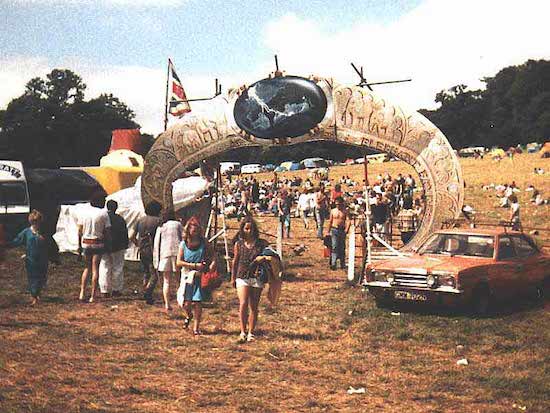Elephant Fayre, my backyard festival, how I miss you; my own private oasis where I was first allowed to shed my skin and metamorphosis into whoever I wanted to be.
I first travelled the few miles from our coastal village of Downderry in Cornwall up to the stately house and garden of Port Eliot where the festival was held at the age of eight. To us working-class kids, the annual event on this aristocratic estate was like something from the TV, balanced precariously somewhere between Upstairs Downstairs and Tizwas.
Back in the day, let’s say mid 1980s (children always have a loose grasp of time), the festival that celebrated "benign anarchy" was a cultural phenomenon in our tiny corner of south-east Cornwall. Nestled within our circle of villages where very little ever happened, it was as if the love child of a 1950s circus and Woodstock had come to town. Me and my older sister got to go for the simple fact that my estranged ‘couldn’t give a fuck about family’ father turned up out of the blue with a couple of blagged kids tickets, tickets which he didn’t want to see go to waste. Except for in the huge vintage military tent that we shared with around twenty other people, we barely saw him all weekend. It was one of the best experiences of my young life.
The Elephant Fayre, held at the 6,000-acre St Germans Estate on the Rame Peninsula in South East Cornwall, is unfairly neglected in the British festival hierarchy. A "fayre" in every sense of the wild word, those few feral days for just a handful of years featured a horde of unique types of performances, media, experimental theatre and music, and for us kids, an extensive playground of precarious wooden structures, river water and muddy fields to get lost in. The first Fayre, held on the banks of the River Tamar Estuary, was pretty small by today’s festival standards, attracting about 1,500 revellers, but the crowd increased over the years as the organisers booked better known acts, including post-punk bands such as The Cure, The Fall, Siouxsie and the Banshees and Killing Joke.
One summer morning dad pulled up outside our council house in his then girlfriend’s racer-green open-top MG. I couldn’t have been more ready, in my straw Stetson and plaid shirt. My sister on the other hand was worried. We didn’t know our dad and mostly had bad memories of him. However, because he was a drunk, the weekend for him was all about the party, which meant freedom for us.
When I close my eyes I can still picture the dense hedges and fields speeding by as we made the four mile run uphill to the inland village which I only ever knew as a fancy place with fancy buildings and a big church, St. Germans. I remember vividly the moment we arrived at the top end of the village, our speeding sports car suddenly halted by a steady stream of hippies who had not long disembarked from the Paddington to Penzance train, walking in the middle of the road.
This slowing down of time had a way of drawing me into the moment, pulling me toward the epicentre of what a festival was, what it meant, a stopping of the…



